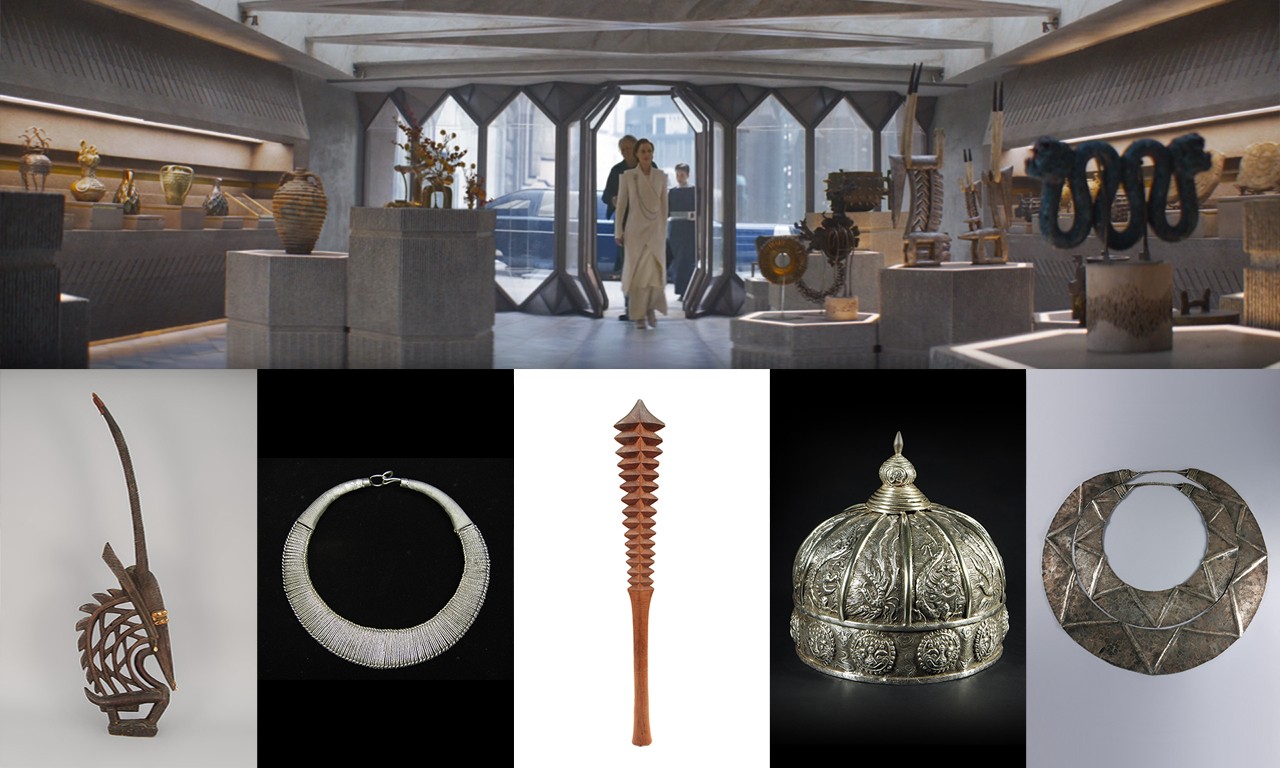 |
| A Coruscant gallery and a selection of objects similar to those from a galaxy far, far away. |
And With You
Happy May the Fourth! As we have done for more than half a decade running, on International Star Wars Day the Bowers Blog again takes a trip to a galaxy far, far away and looks closely at some Bowers objects that are visually similar to the alien races and artifacts that appear in the franchise. The 2022 Andor show on Disney+ did an especially impressive job of showcasing artifacts from throughout the Star Wars universe in a series of scenes that take place in an antiquities gallery on the galactic capitol of Coruscant. While many fans were commenting with delight about all the nods to other stories within the Star Wars universe, we here at the Bowers Museum were particularly impressed by the ethnographic objects from around our world—and in our permanent collections—that made their way into the scene with varying degrees of modification. In this post we take a quick look at a selection of these objects and similar Bowers pieces.
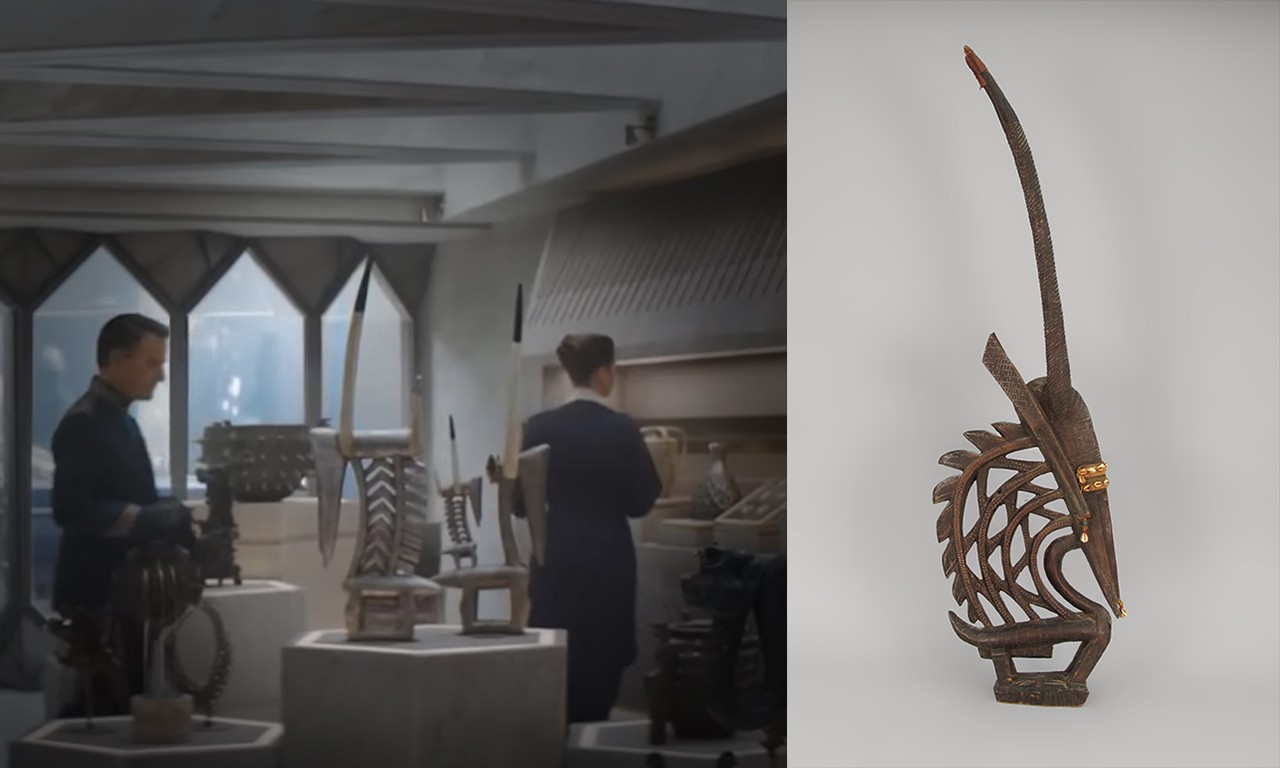 |
Headdress (Ciwarakunw ), 20th Century
Bamana culture; Western Mali
Wood, fabric, shell and string; 7 x 46 1/2 in.
2003.60.1A
Gift of Martha Ann Bryson |
Andorian Antelope
A lot of the objects that populate this gallery scene are not referenced elsewhere in Star Wars’ canon; where exactly they might fit into the universe, the alien or human cultures that created them are not addressed. Fortunately, we have quite a bit to say about the cultures that can originally be attributed to the creation of their earthly antecedents. The two sculptures of metallic horned animals seen here, one of which has a smaller baby riding on its back, are direct references to the ciwarakunw of the Bamana culture of Africa. Agrarian cultures like the Bamana often create myths about the origin of their farming practices. In their oral tradition, it was a legendary half-man, half-antelope named Ciwara that was responsible for teaching mankind agriculture. Though the original Ciwara has since disappeared into the earth, the Bamana still honor him by carving wooden ciwarakunw headdresses like these and dancing them at festivals following especially rigorous periods of farming. The particular example featured in the episode is almost identical to an example in the collections of the Metropolitan Museum of Art.
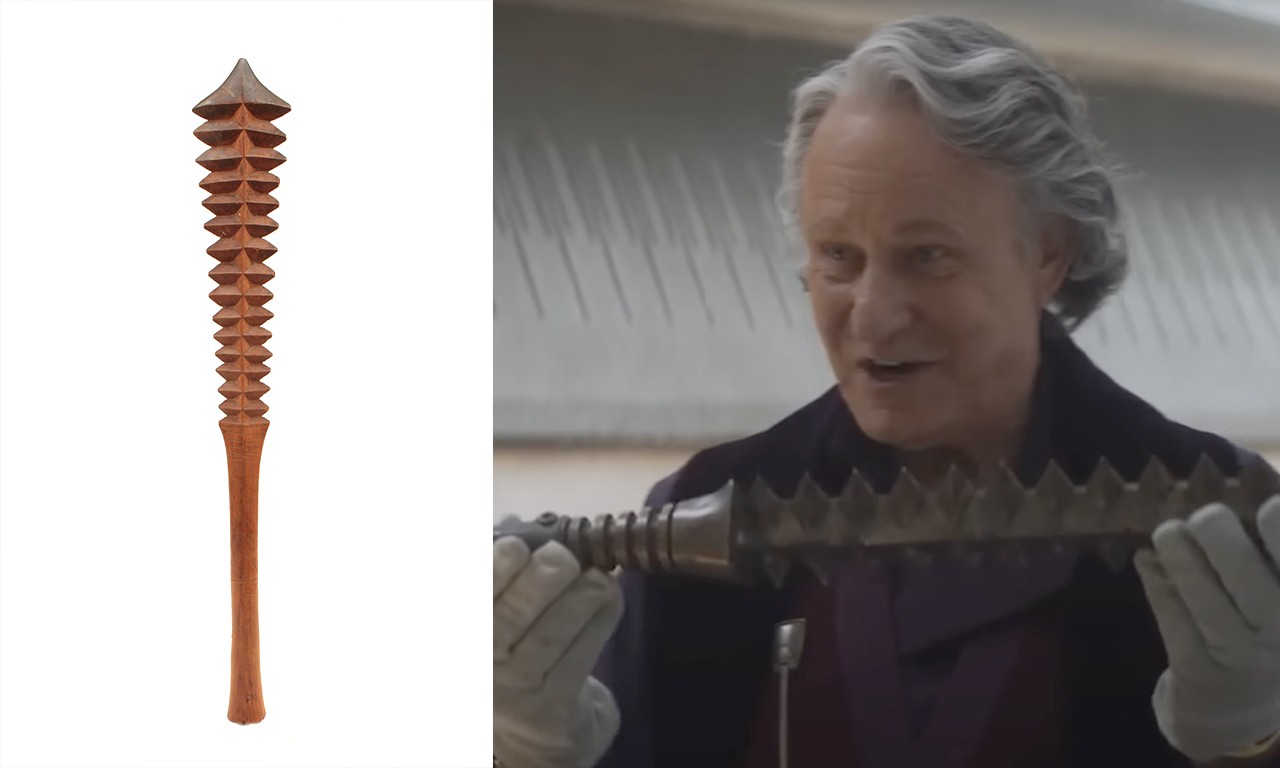 |
Bilateral Tooth Club (Fa'alauf'l), 19th Century
Samoan; Samoa, Polynesia
Wood; 28 × 4 × 1 5/8 in.
2013.20.1
Bowers Museum Purchase |
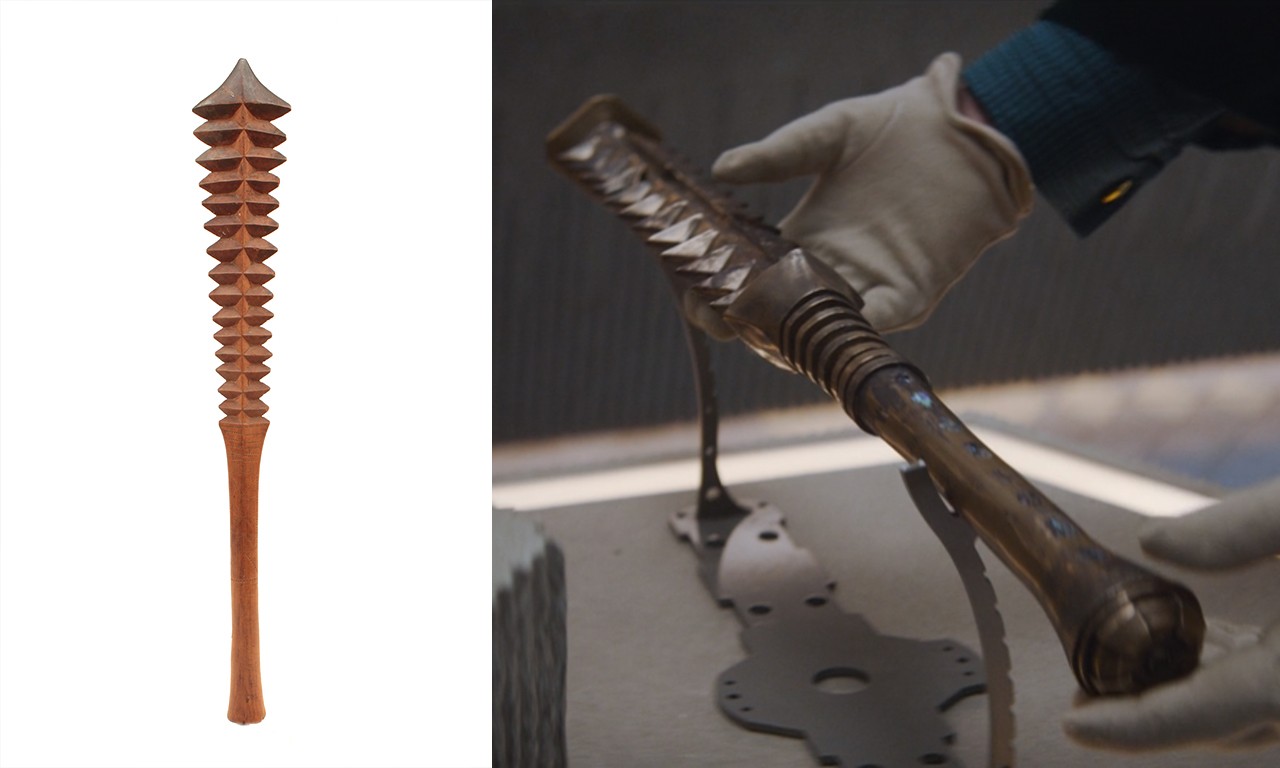 |
Bilateral Tooth Club (Fa'alauf'l), 19th Century
Samoan; Samoa, Polynesia
Wood; 28 × 4 × 1 5/8 in.
2013.20.1
Bowers Museum Purchase |
Hello There, Utapau
The owner of the gallery showcases a few of the objects on display to a visitor who is ostensibly in search of a gift for their husband. One of these pieces, among the oldest in his collection, is introduced as an "Utapaun monk cudgel," a reference to the planet of Utapau which appears in Episode III: Revenge of the Sith. On our planet, similar bilateral-tooth-type clubs were traditionally made by the peoples of Samoa and called fa'alauf'l. Status and title were of the utmost importance in Samoa and rivalry between villages was common. In both warfare and the ceremonies that surrounded warfare, Samoan clubs were the first choice as a weapon and as regalia.
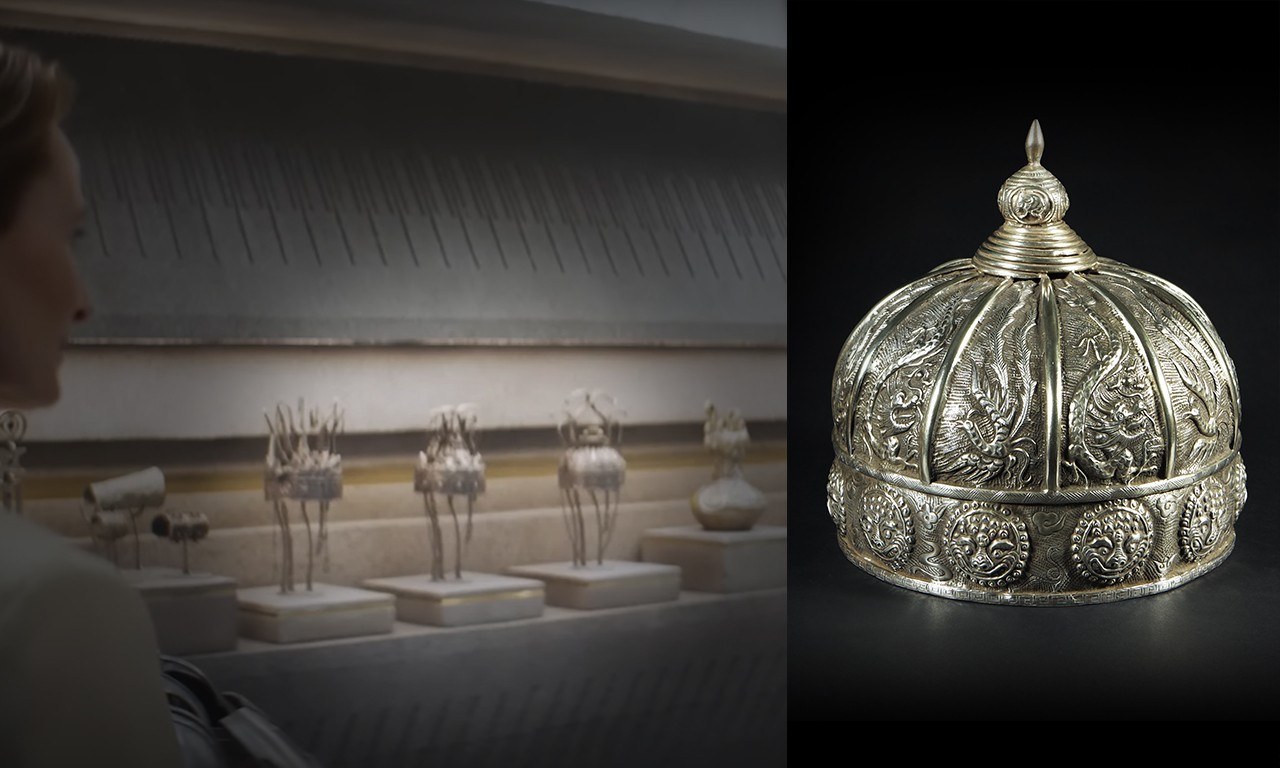 |
Celestial Crown, 20th Century
Miao culture; Guizhou Province, China
Copper, zinc and silver; 8 3/4 × 8 1/8 in.
2015.26.11
Anonymous Gift |
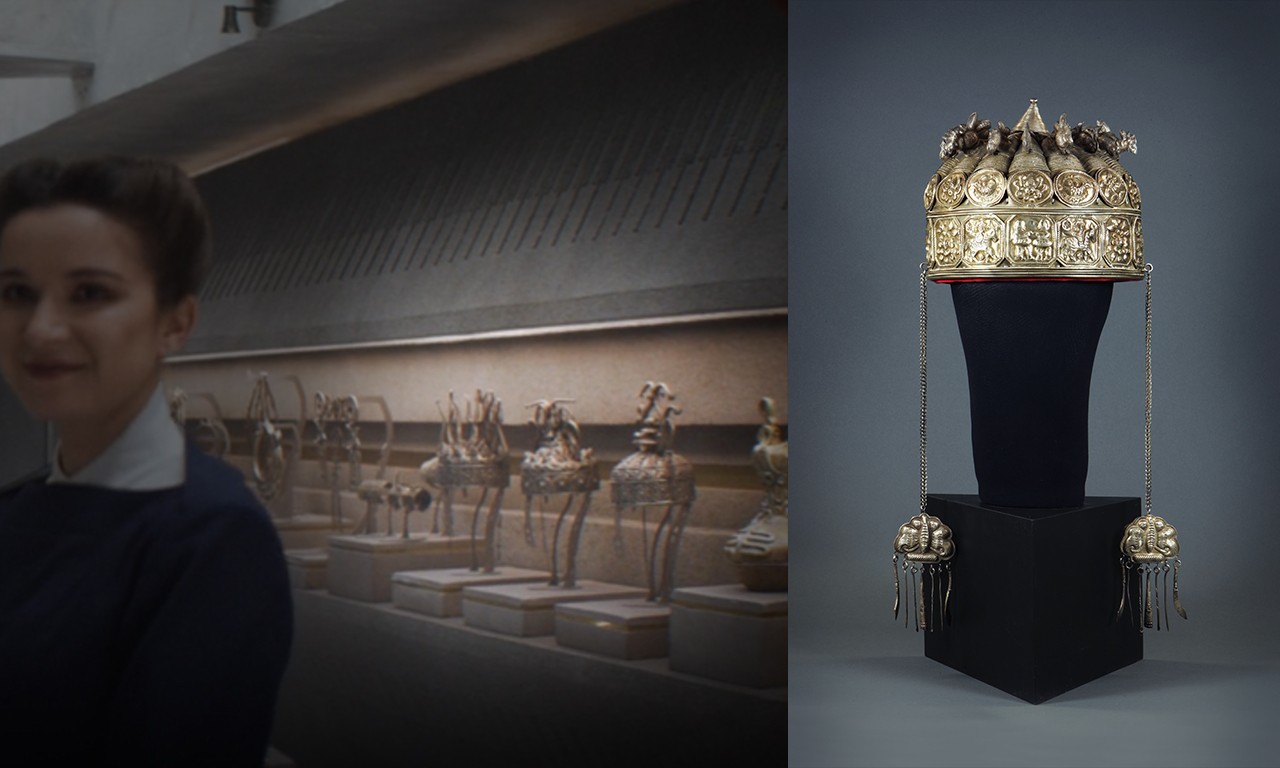 |
Festival Crown, 20th Century
Miao culture; Guizhou Province, China
Silver and cloth; 20 × 8 1/2 × 6 in.
2015.8.1
Gift of Anne and Long Shung Shih |
Having the High Crown
The remaining pieces that we look at in this post are arranged along one long wall of the Coruscant gallery. It is great that the pieces are displayed in this way because they are all made by the same minority ethnic group: the Miao peoples living in the Guizhou and neighboring provinces of southeast China. The Bowers showcases these and other silver pieces from this culture in our Miao: Masters of Silver exhibition and elsewhere on the blog. The creation of such highly refined silverwork might very well feel out of this world, but it has been a mainstay of Miao culture since around the time that they migrated to the lands they currently reside in. The celestial crowns featured in Andor appear to have been slightly modified with banded finial elements to distance them somewhat from the real-world examples.
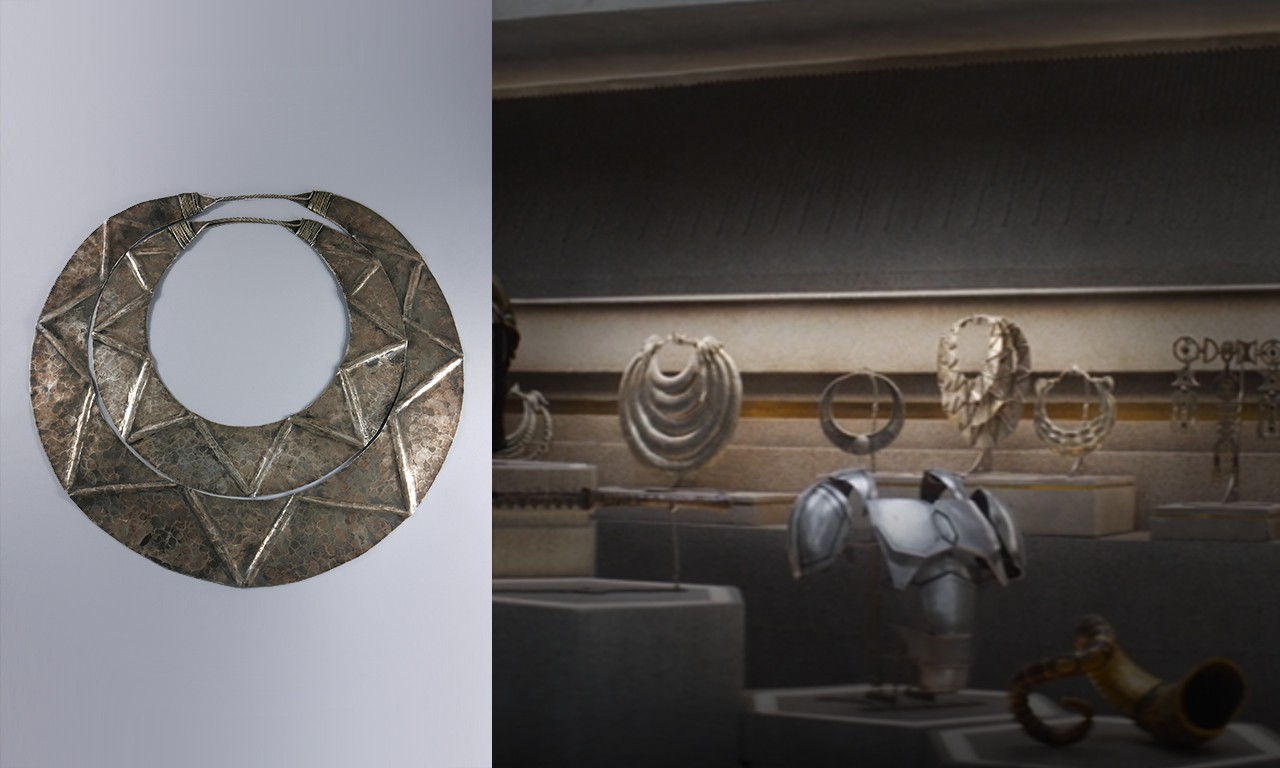 |
Neck Rings, 20th Century
Miao culture; probably Guizhou Province, China
Silver; 15 × 15 3/4 × 1/4 in.
2020.14.42a,b
Gift of Anne and Long Shung Shih |
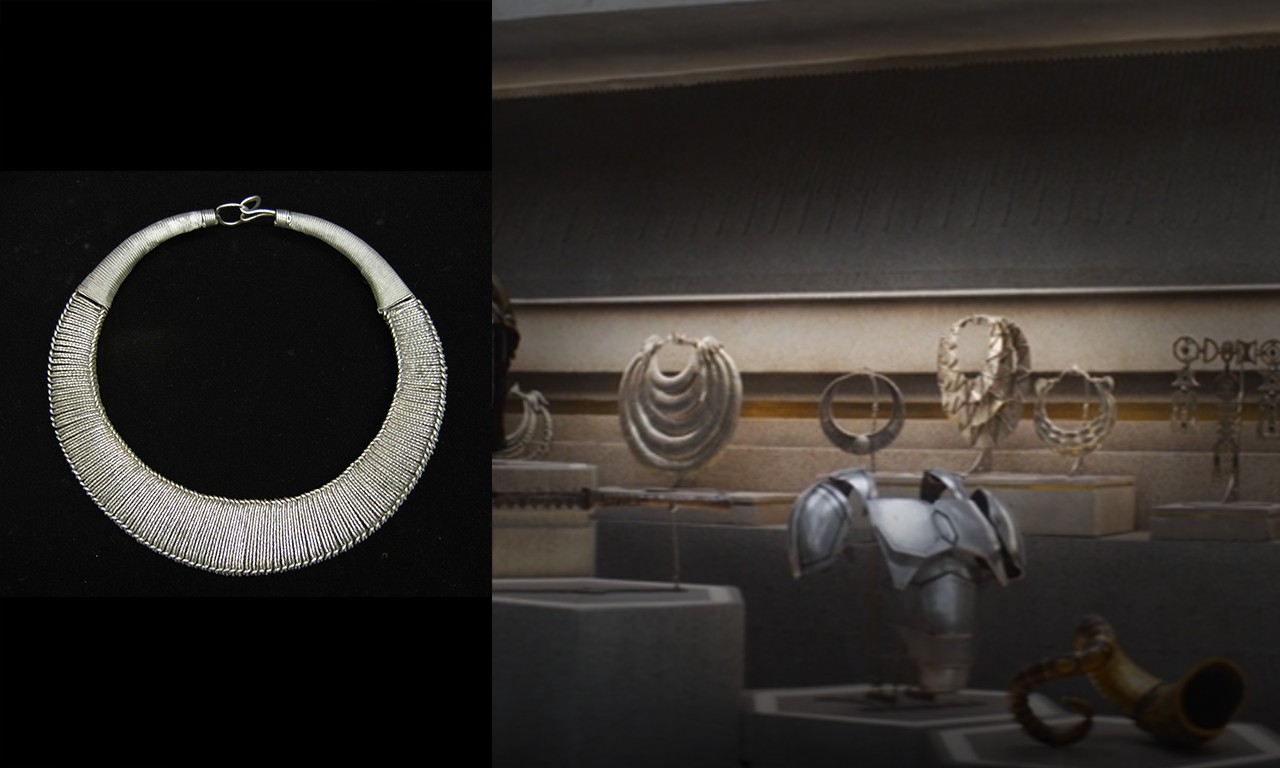 |
Necklace, 20th Century
Miao culture; probably Guizhou Province, China
Silver; 11 x 10 in.
2002.64.1
Gift of Anne and Long Shung Shih |
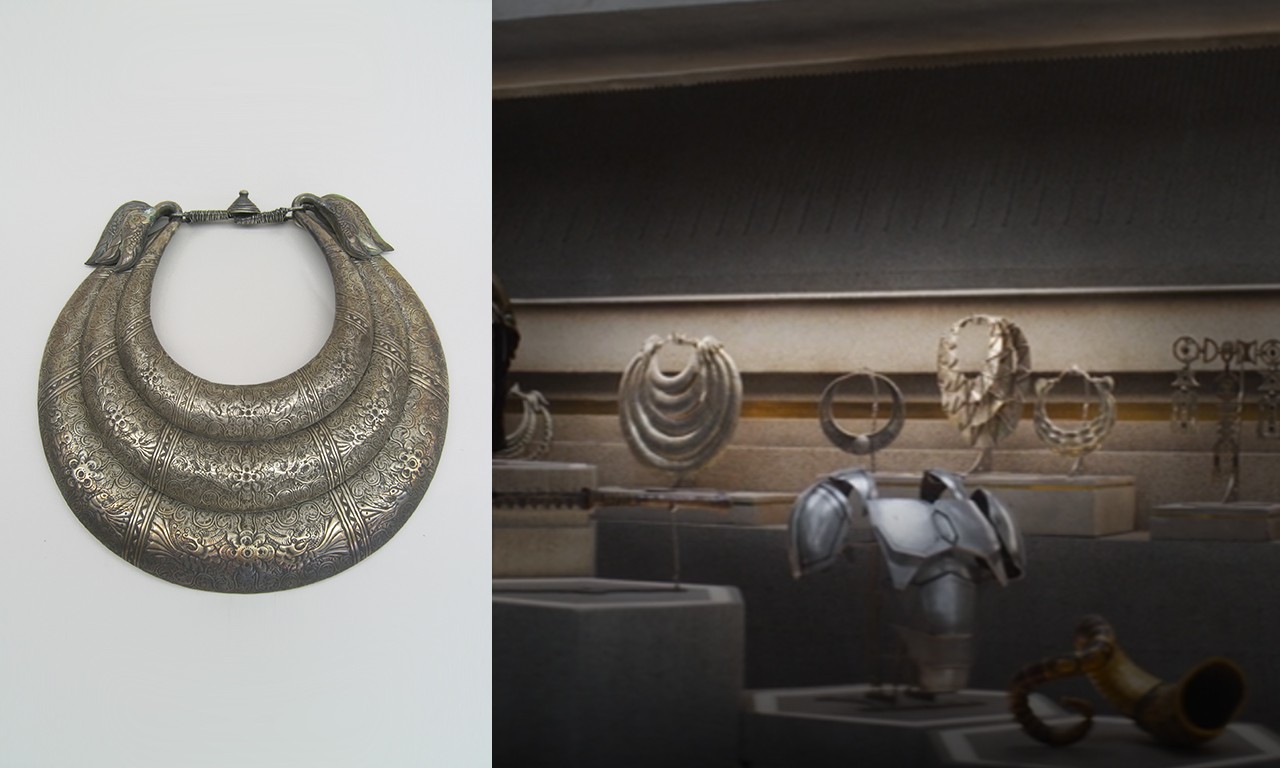 |
Necklace, 20th Century
Miao culture; Guizhou Province, China, Asia
Silver; 13 1/2 × 13 1/2 in.
2008.6.18
Gift of Anne and Long Shung Shih |
Annular Items
Without the ability to enhance images in the fashion of CSI:Miami, it would be a difficult to make out the other Miao pieces in Andor were it not for the distinctive shapes of Miao neck rings. Miao silver adornments would have been reserved for festival or celebratory wear, most often by unmarried women. Traditionally, silver was worn to ward off evil, with silver’s bright sheen symbolizing light. Over time as it became more culturally pervasive it came to be used as a show of wealth and health for families who could afford to wear the precious metal. Adolescent girls could wear as much as 10 kilograms of silver. When women marry the silver serves as a dowry and is eventually redistributed to their own children.
As the Star Wars universe continues to expand, it will very likely continue to do what has been done in sci-fi since its inception: draw inspiration from artifacts and cultures around the globe. We cannot wait to see what more galleries from a long time ago in a galaxy far, far away might stock.
Text and images may be under copyright. Please contact Collection Department for permission to use. Information subject to change upon further research.










Comments